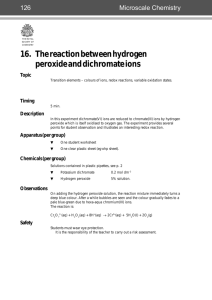An equilibrium involving chromate(VI) and dichromate(VI) ions
advertisement
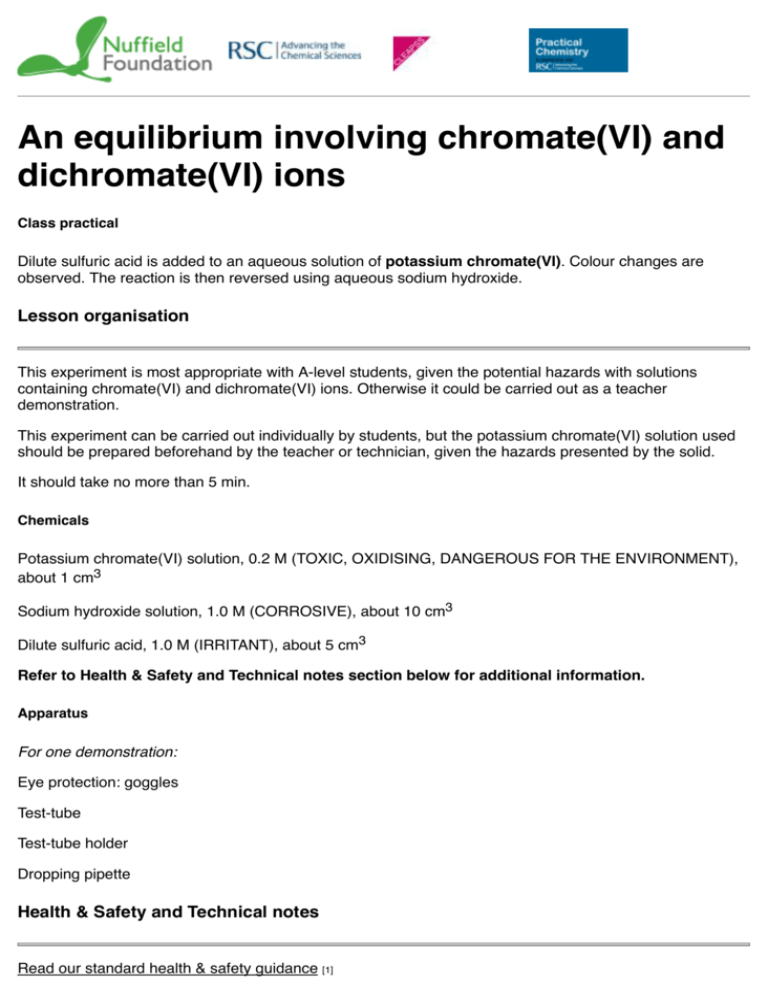
An equilibrium involving chromate(VI) and dichromate(VI) ions Class practical Dilute sulfuric acid is added to an aqueous solution of potassium chromate(VI). Colour changes are observed. The reaction is then reversed using aqueous sodium hydroxide. Lesson organisation This experiment is most appropriate with A-level students, given the potential hazards with solutions containing chromate(VI) and dichromate(VI) ions. Otherwise it could be carried out as a teacher demonstration. This experiment can be carried out individually by students, but the potassium chromate(VI) solution used should be prepared beforehand by the teacher or technician, given the hazards presented by the solid. It should take no more than 5 min. Chemicals Potassium chromate(VI) solution, 0.2 M (TOXIC, OXIDISING, DANGEROUS FOR THE ENVIRONMENT), about 1 cm3 Sodium hydroxide solution, 1.0 M (CORROSIVE), about 10 cm3 Dilute sulfuric acid, 1.0 M (IRRITANT), about 5 cm3 Refer to Health & Safety and Technical notes section below for additional information. Apparatus For one demonstration: Eye protection: goggles Test-tube Test-tube holder Dropping pipette Health & Safety and Technical notes Read our standard health & safety guidance [1] Wear goggles. Potassium chromate(VI) solution, K2CrO4(aq) (TOXIC, OXIDISING, DANGEROUS FOR THE ENVIRONMENT) - see CLEAPSS Hazcard and CLEAPSS Recipe Book. Sodium hydroxide solution, NaOH(aq) (CORROSIVE) - see CLEAPSS Hazcard and CLEAPSS Recipe Book. Dilute sulfuric acid, H2SO4(aq), (IRRITANT) - see CLEAPSS Hazcard and CLEAPSS Recipe Book. Procedure a Put 10 drops of potassium chromate(VI) solution in a test-tube. b Add about 5 cm3 of sulfuric acid and shake to mix thoroughly. What do you observe? c Now add about 10 cm3 of sodium hydroxide solution and shake the mixture. Do you get back to where you started? d Can you repeat the whole process by adding sulfuric acid and sodium hydroxide alternately all over again? Technical notes The process occurring involves the equilibrium between chromate(VI), dichromate(VI) and hydrogen ions: The addition of acid encourages the equilibrium towards the right, producing more orange-coloured dichromate(VI) ions. The addition of hydroxide ions causes the concentration of hydrogen ions to decrease, and this brings the equilibrium back to the left-hand side, regenerating yellow chromate(VI) ions. It is important that students realize that both ions are always present and exist in equilibrium with one another, but that the yellow chromate(VI) ions predominate under alkaline conditions and the orange dichromate(VI) ions predominate in acidic solutions. Students may be asked if this a redox reaction. Their answer is often ‘yes’, but examination of oxidation numbers will show that chromium remains in the +6 oxidation state throughout. Health & Safety checked August 2008 Weblinks Journal of Chemical Education [2] - a set of still pictures showing the colour changes. Source URL: http://www.nuffieldfoundation.org/practical-chemistry/equilibrium-involving-chromatevi-anddichromatevi-ions Links: [1] http://www.nuffieldfoundation.org/node/1634/ [2] http://www.jce.divched.org/JCESOFT/CCA/CCA8/MAIN/8/08/32/thumbs.html
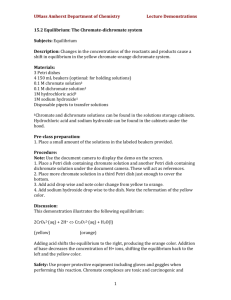
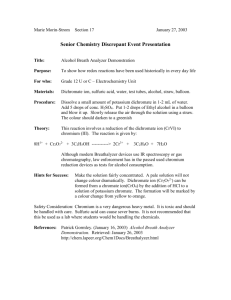

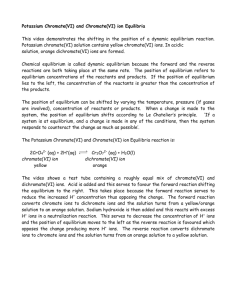

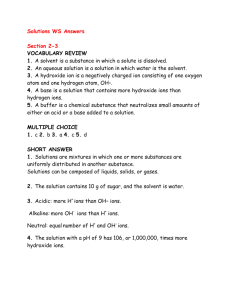

![Solubility Equilibria Assignment Question [2005/RI/III/3] The](http://s2.studylib.net/store/data/010161949_1-86b5ffaf7f49fedf26a2dad1aba191ff-300x300.png)



